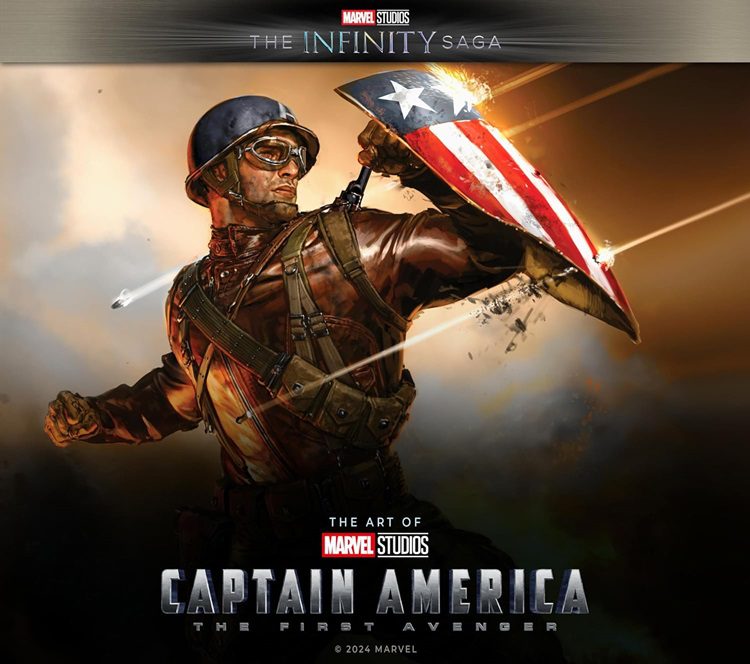
Marvel Studios: The Infinity Saga – The Art of Captain America: The First Avenger is the fourth release in the 24-book Marvel Studios: The Infinity Saga series, which is republishing previously released art books as a resized matching set. As I stated in my review, this movie “introduces the star-spangled superhero in a thrilling WWII adventure.”
Buy The Art of Captain America: The First AvengerIn the Introduction, readers are provided a history of the character. Captain America Comics #1 debuted in March 1941, months before Pearl Harbor, with the iconic image of Cap socking Hitler in the face. A brief recap explains how Steve “Rogers soon became a perfect human specimen” after taking the Super-Soldier serum. Co-creator Joe Simon, whose autobiography has been reviewed at the site, speaks through archival interviews about the controversy Captain America caused and the danger it put he and co-creator Jack Kirby in. After the war ended, the character’s popularity faded. In 1964, Stan Lee and Kirby had the character discovered frozen in ice by the Avengers, and throughout the decades, creative teams have used Steve Rogers and Captain America, according to Co-producer Stephen Broussard, as “a reflection of the times.” This movie is no different.
The filmmakers didn’t make it easy on themselves as Cap has “several different looks.” Artwork reveals a variety of looks at his USO costume, which Production Designer Rick Heinrichs made “a little bit goofier than [he] expected,” his POW rescue uniform, inspired by The Ultimates, and the final red, white, and blue suit.
Lieutenant General Johann Schmidt is the main villain of the story. He’s the leader of Hydra, the Nazi’s scientific research division, but he has his own designs for world domination. He leads a group into Norway in pursuit of the Tesseract. Concept art by Mauro Borelli shows Schmidt’s office and the Castle Rock Tower. Eventually, Schmidt drops his disguise and shows the disfigurement suffered after trying an early version of the Super-Soldier serum. Concept Artist Ryan Meinerding talks about different version they tried but “just ended up with the classic” Red Skull look. This chapter also looks at the different gear and weapons used by Hydra. For the latter, Meinerding revealed director Joe Johnston “wanted them to look like technology first and a weapon second.”
The “Allied Forces” Cap is assisted by are characters from his own book, Bucky Barnes and Peggy Carter, and from Sgt. Fury and his Howling Commandos. Concept art and production stills show their development. “The Battle Lines” look at the sets, starting with the World’s Fair, the Rebirth Lab where Steve becomes Captain America, and New York City. Then the story heads to Europe with stops in the Allied HQ, the Whip and Fiddle Pub, and the labs of Zola and Schmidt. The “Heavy Artillery” features Cap’s iconic shield, the Cosmic Cube, various weapons, and all variety of vehicles that travel on air, sea, and land. Chapter Six presents Rodolfo Damaggio’s storyboards of the Kruger Chase Scene where Steve, newly endowed with his powers, chases a Nazi through the streets on New York City. The book concludes with a look at various posters and a tie-in digital comic used in the movie’s marketing
I am on record writing “Captain America: The First Avenger is a marvelous movie,” and The Art of Captain America is marvelous in its own right. It shows readers the artists’ steps and their commentary about the pre-production process in creating the MCU’s version of 1940s Earth.